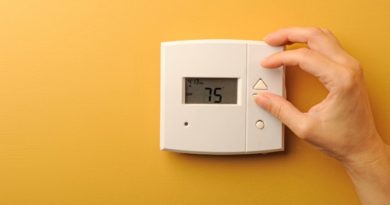Energy Adviser: More attic insulation can pile on savings – The Columbian
Energy Disrupter

Looking to make your home more comfortable and efficient? The best place to begin may be hanging just above you.
“Adding insulation to the attic and sealing air leaks around light fixtures are among the most effective and affordable ways to lower heating and cooling costs and improve personal comfort in an older home,” said Clark Public Utilities Energy Services Supervisor DuWayne Dunham.
A well-insulated attic will help your home stay at a comfortable temperature longer. In turn, your heating or cooling system will use less energy to keep your home at your preferred temperature. Adding insulation has a lower cost of investment than many other home improvement projects. Plus, added insulation starts paying for itself right away in the form of reduced energy expenses.
To learn whether your attic needs insulation, just grab a flashlight and a ruler and find the attic access. If you can see the tops of your ceiling joists through the insulation or measure six inches or less on average, then adding more is a good idea. Unable to climb up there or just need a second opinion? A weatherization contractor should be happy to help.
As a rule of thumb, homes built before the 1990s are often prime candidates for additional insulation. Homes more than 30 years old were built with far less emphasis on energy efficiency than their modern counterparts.
Adding insulation is certainly a project within reach of a confident DIYer, but doing the job well isn’t as simple as it seems.
“To make the most of an insulation job, you need to prep your site well and pay close attention to the details,” Dunham said. “There are also safety concerns that must be addressed when adding insulation.”
Using the proper type of expanding foam to seal air leaks around light fixtures and plumbing and sealing any present duct work will make a tremendous difference in the effectiveness of the attic insulation. It’s also critical for exhaust fans to have a tight seal and proper ventilation out of the home. Finally, the attic itself must have proper ventilation to allow air through the space.
Proper ventilation is important, but attic fans aren’t usually necessary — despite the convincing marketing materials. An attic fan uses energy and is just another thing that could break. If there are air leaks in the ceiling below, the fan could pull conditioned air out of the home below and blow it outside, which will lower the home’s energy efficiency and indoor air quality.
A handy homeowner may be tempted to save money by doing the work themselves, but it’s worth comparing the cost of materials against a few contractor bids. Contractors don’t pay retail prices for materials and they usually pass the savings onto their clients. Plus, they don’t just toss some insulation up there and call it a day. They’ll look for air leaks and look for other issues most people wouldn’t know to consider. Then they’ll work with the homeowner to build a plan. Even if the DIY route is cheaper, the value of the contractor’s work will likely be worth the extra cost.
“A quality job will make that new insulation much more effective and that’ll transform into greater energy savings and a shorter return on investment,” Dunham said.
As beneficial as good attic insulation is, it’s also worth investing in additional floor and wall insulation if necessary.
Clark Public Utilities offers financial incentives for electrically heated homes that can make home insulation projects more affordable. Certain conditions apply. Contact the Energy Counselor of the Day at 360-992-3355 during business hours, or visit clarkpublicutilities.com for more information.
Energy Adviser is written by Clark Public Utilities. Send questions to ecod@clarkpud.com or to Energy Adviser, c/o Clark Public Utilities, P.O. Box 8900, Vancouver, WA 98688.
Original Source: https://www.columbian.com/news/2022/may/14/energy-adviser-more-attic-insulation-can-pile-on-savings/
















